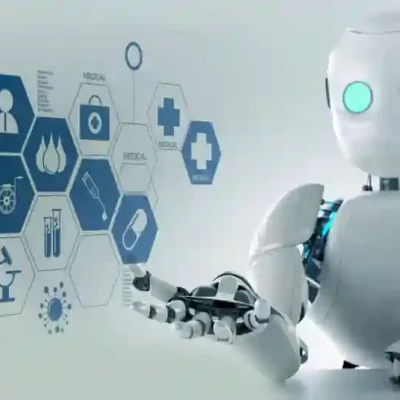In today’s fast-paced world, we’re no strangers to the unpredictable twists and turns that Mother Nature can throw our way. From earthquakes that shake the very ground beneath our feet to hurricanes that whip up a frenzy of destruction, disasters can strike at any moment. When chaos reigns supreme, and lives are at stake, it’s the brave men and women of our emergency services who rush in to save the day. But what if there was a way to bolster their ranks and increase their efficiency? That’s where the marvel of robotics steps in!
Imagine a world where robots, those nifty machines that once seemed like something out of a science fiction movie, are now the unsung heroes of disaster response. It’s not as far-fetched as it might sound. Robotics is revolutionizing emergency services in more ways than one, and in this article, we’ll explore just how they’re doing it.
Robots to the Rescue
When disaster strikes, time is of the essence. Lives hang in the balance, and the faster help arrives, the greater the chances of survival. That’s where robots come into play. These mechanical marvels can navigate treacherous terrains that would be hazardous for humans. They’re equipped with sensors and cameras that provide real-time information to emergency responders, allowing them to assess the situation and plan their response effectively.
Picture this: a massive earthquake has struck, leaving rubble-strewn streets in its wake. Trying to send in humans to search for survivors in such a perilous environment is a risky endeavor. But send in a search and rescue robot, and you’ve got a much safer and efficient operation on your hands. These robots can crawl through debris, locate victims using thermal imaging, and even provide two-way communication with the trapped individuals until help arrives.
Drones on the Frontline
Drones, those nifty flying robots, are another game-changer in disaster response. When wildfires rage or floods inundate vast areas, getting an aerial view of the situation is invaluable. Drones can quickly fly over disaster-stricken areas, capturing high-resolution images and video footage that can guide first responders in their efforts.
But drones aren’t just for reconnaissance. They can also be equipped with payloads like medical supplies, food, and water. In remote or hard-to-reach areas, these flying machines can deliver much-needed aid to those in distress. It’s like having a guardian angel swooping in from the skies, providing assistance when it’s needed most.
Robotic First Responders
Emergency medical services are also benefiting from the rise of robotics. Imagine a medical emergency in a densely populated area where every second counts. Paramedics might struggle to reach the scene through traffic, but what if a robotic ambulance could weave through the congestion with ease?
These autonomous vehicles, fitted with life-saving equipment, can reach the patient faster than any human-operated ambulance. They can administer basic medical care, keep the patient stable, and even communicate with doctors in real-time. It’s a lifeline that’s available 24/7, ensuring that help is never too far away.
The Human-Tech Partnership
Now, you might be wondering if robots are here to replace humans in disaster response. The answer is a resounding no. Robots are meant to complement the heroic efforts of our first responders, not replace them. The human touch, empathy, and decision-making abilities are irreplaceable in complex and ever-changing disaster scenarios.
Robots are there to take on the dangerous and repetitive tasks, allowing humans to focus on critical decision-making and providing care to those in need. It’s a partnership that combines the best of both worlds – the precision and efficiency of machines with the compassion and adaptability of humans.
Challenges and Future Prospects
Of course, like any emerging technology, robotics in disaster response comes with its fair share of challenges. These include issues related to cost, training, and the need for interoperability between different robotic systems. There’s also the question of ethics and ensuring that robots are used responsibly and ethically in disaster situations.
However, as technology continues to advance, these challenges are being addressed. Robotics companies and researchers are constantly working to improve the capabilities of these machines and make them more accessible to emergency services worldwide.
In the future, we can expect to see even more innovative uses of robotics in disaster response. From advanced drones that can perform complex search and rescue missions to humanoid robots that can provide on-the-spot medical assistance, the possibilities are endless.
Conclusion
In the ever-changing landscape of disaster response, robotics is proving to be a valuable ally. These machines are enhancing emergency services by providing rapid and efficient support in the most challenging of circumstances. They’re not here to replace the brave men and women who rush to our aid in times of crisis but to stand by their side, offering a helping hand when it’s needed most.
As technology continues to evolve, we can look forward to a future where robots play an even more prominent role in disaster response, saving lives and making our world a safer place. So, the next time disaster strikes, take comfort in knowing that there’s a robotic hero out there, ready to lend a hand in our time of need.



